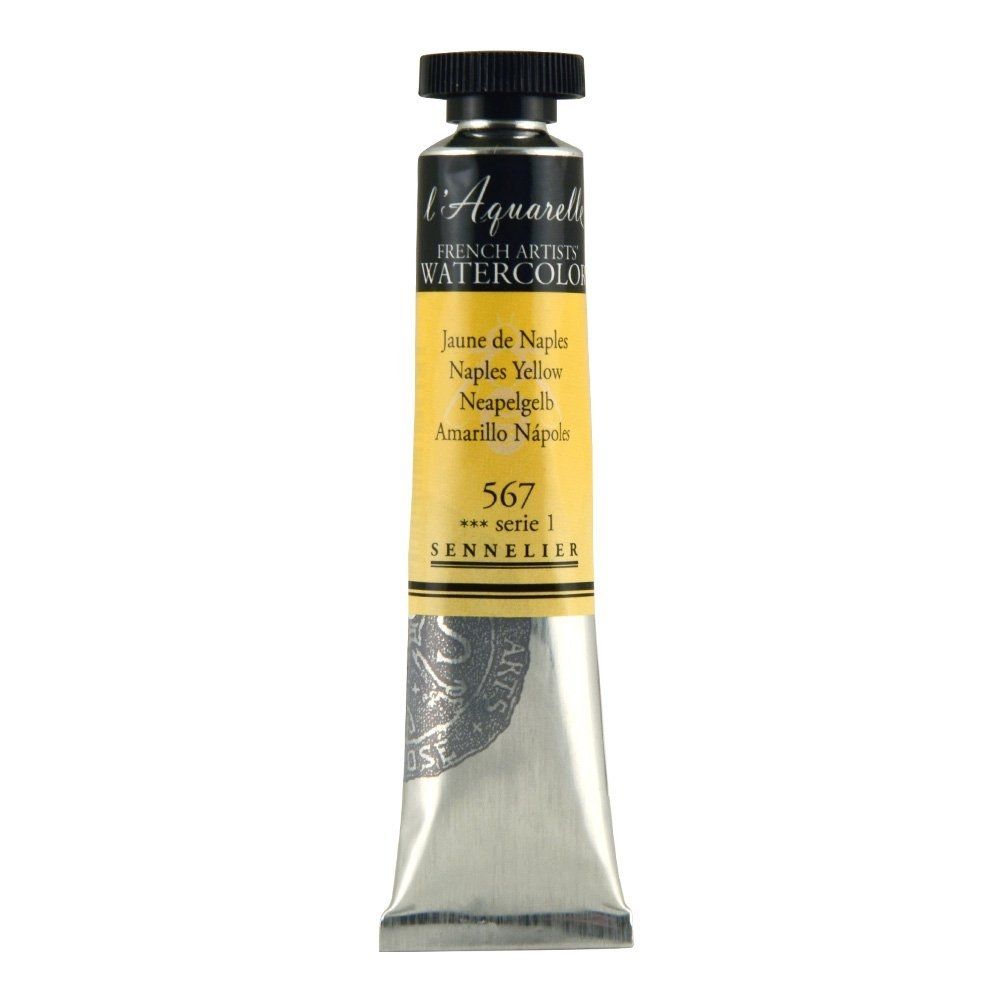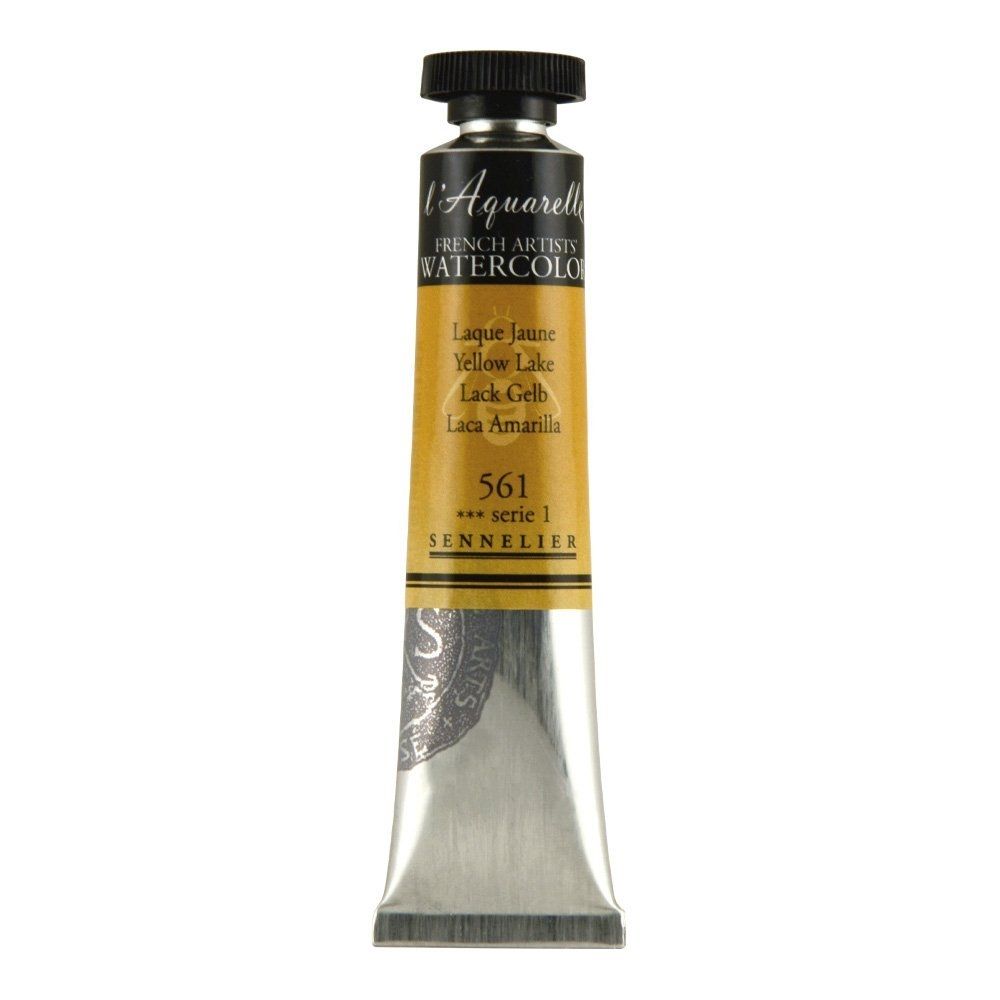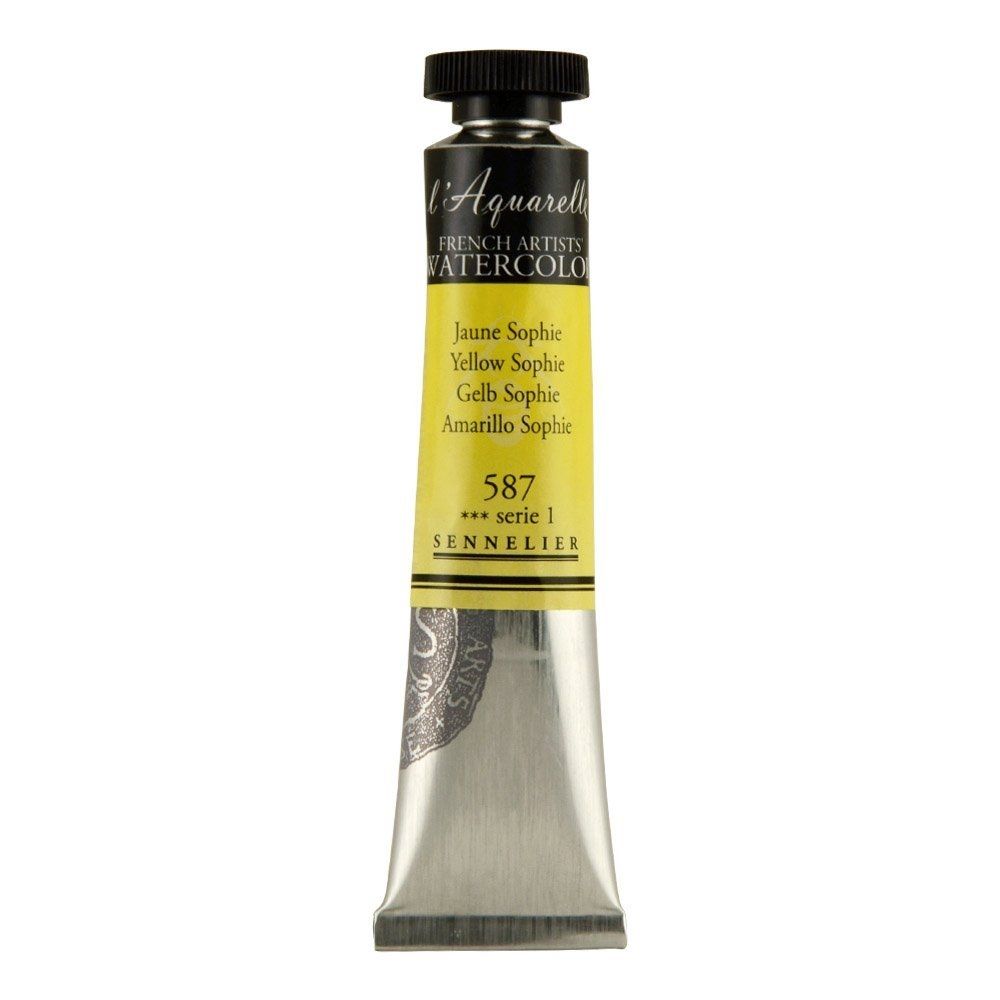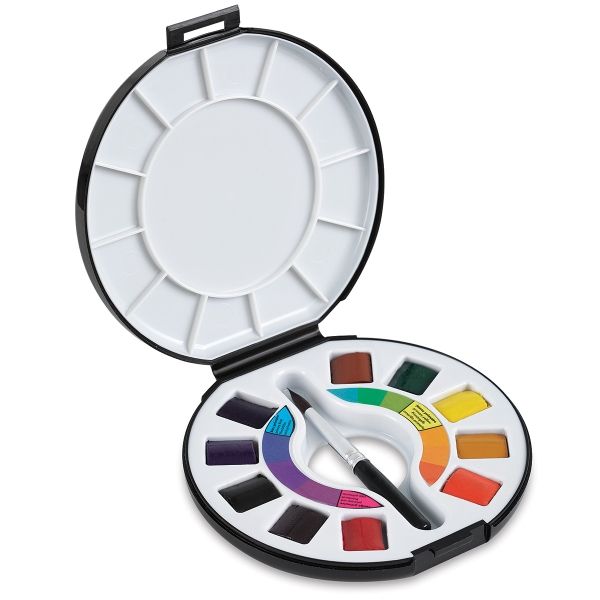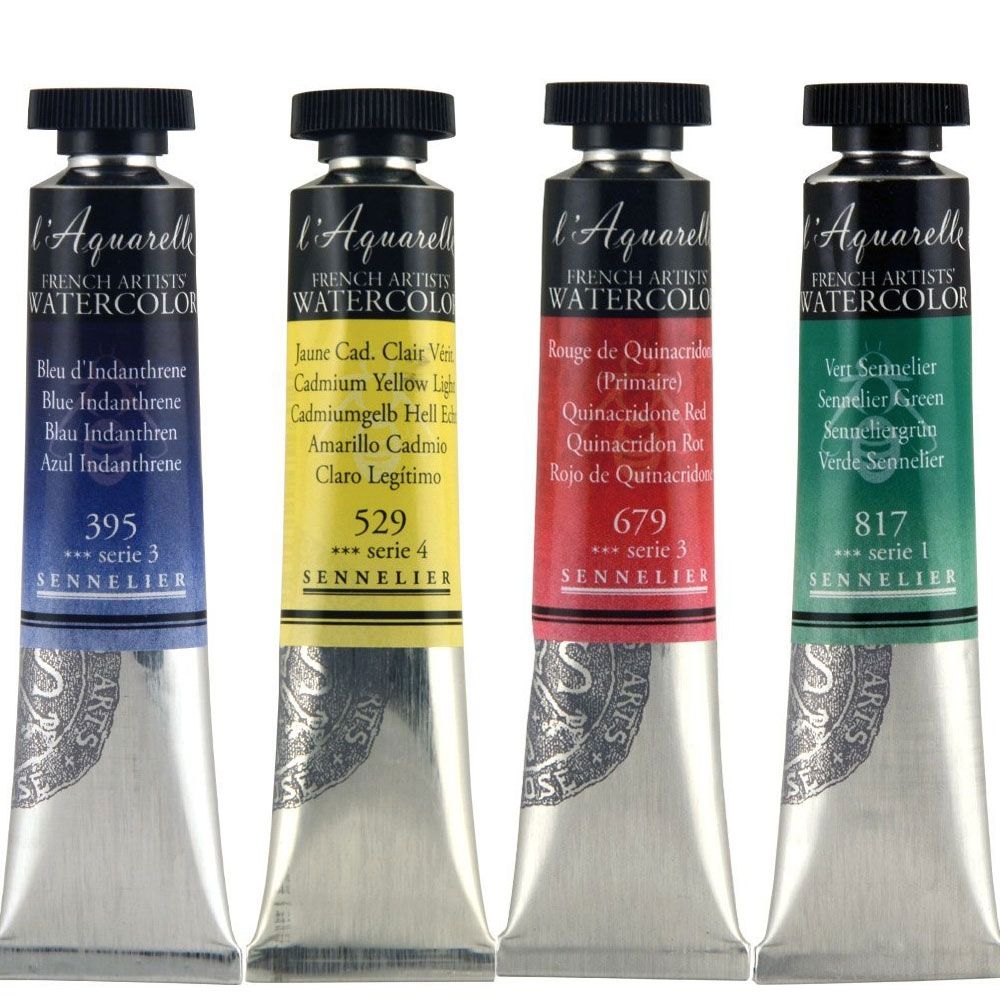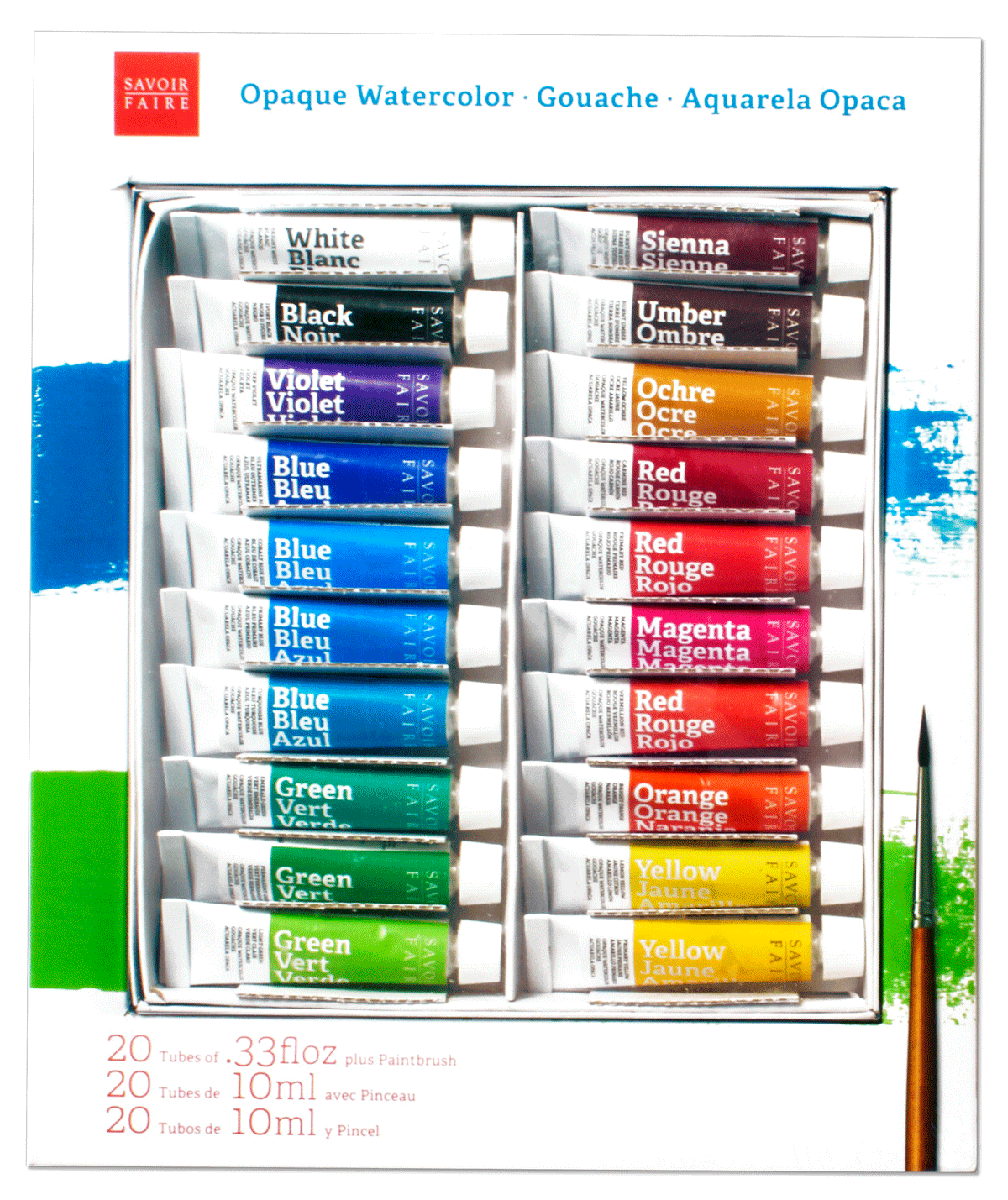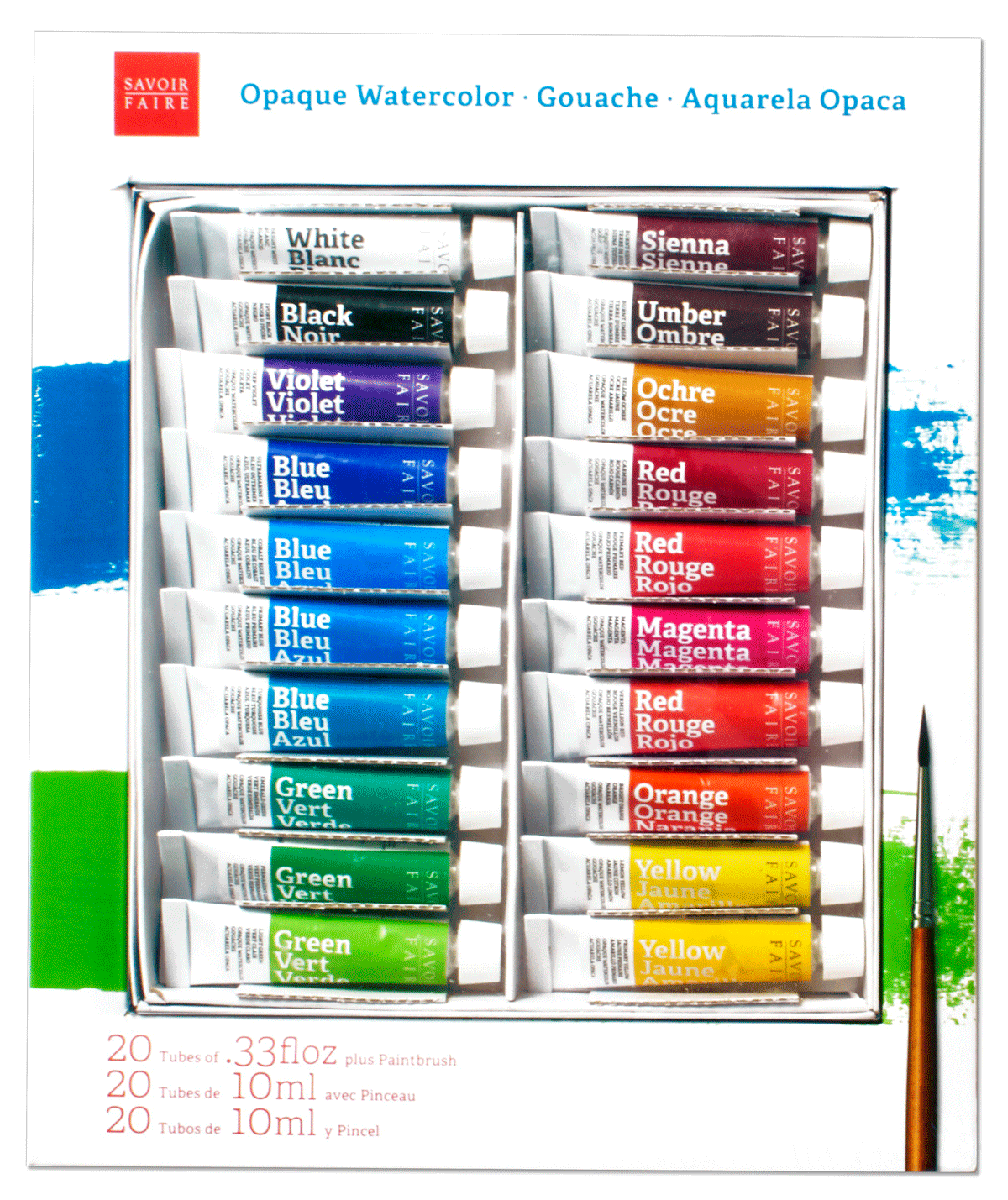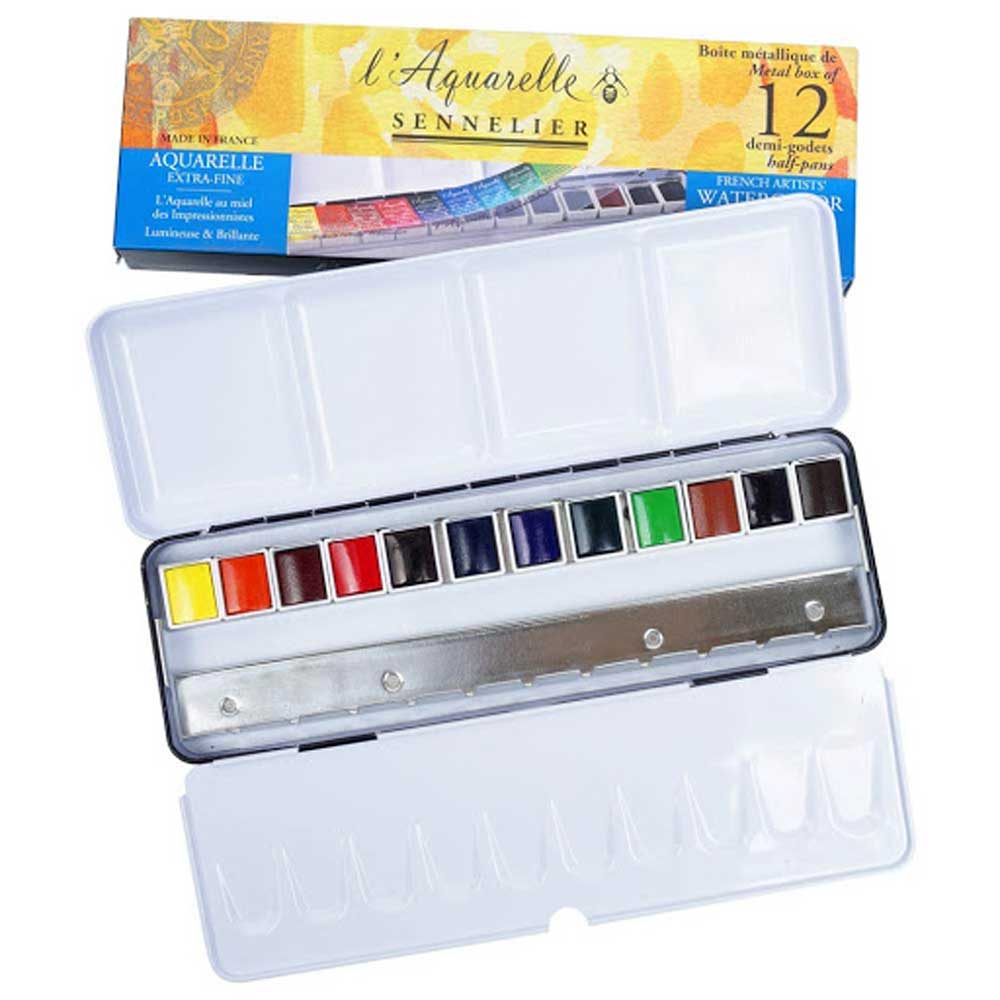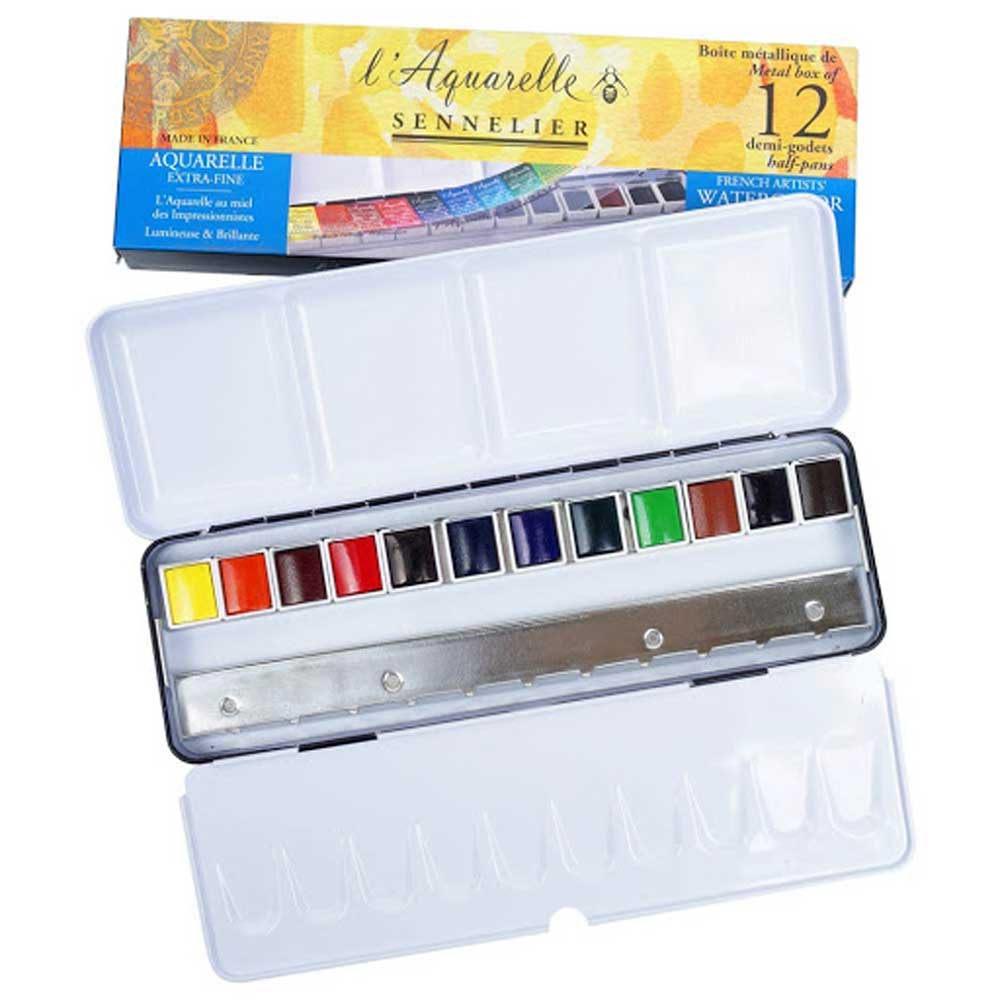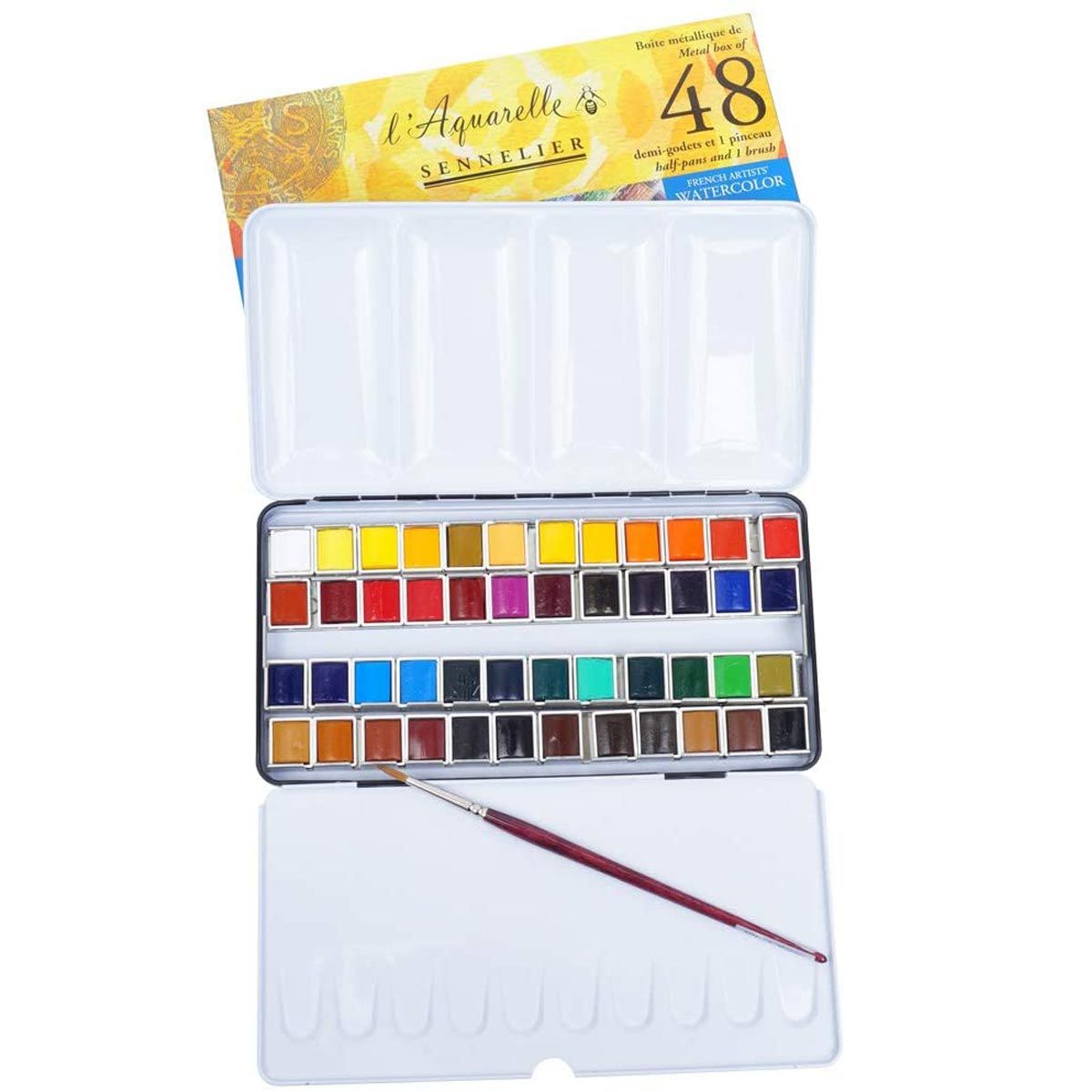Sennelier Watercolour S1 Naples Yellow (567) 21 ml
Naples Yellow (567) Cadmium Yellow is brilliant, dense, and opaque, with good tinting strength and very high hiding power. Titanium White is the most brilliant of the white pigments. Its masstone is neither warm nor cool. Semi-opaque in watercolour form. Zinc White is the coolest white, and it has a cold, clean masstone and a slightly bluish tint. It has less hiding power and is more transparent than other whites.
- Pigment Name: PY35—Cadmium Yellow; PW6—Titanium White; PW4—Zinc White
- Pigment Type: PY35-Inorganic, cadmium; PW6, PW4 Inorganic
- Series: 1
- Opacity: Opaque
- Permanence/Lightfast: (1) ***
Sennelier Watercolour S1 Naples Yellow (567)
Naples Yellow (567) Cadmium Yellow is brilliant, dense, and opaque, with good tinting strength and high hiding power. Titanium White is the most brilliant of the white pigments. It is considered an all purpose colour useful in all techniques and the best all around. Its masstone is neither warm nor cool, placing it somewhere between Lead White and Zinc White. Semi-opaque in watercolour form. Zinc White is the coolest white and has a cold, clean masstone and a slightly bluish tint. It has less hiding power and is more transparent than other whites. Chinese White is a version of Zinc White appropriate for opaque watercolour techniques.
PY35—Cadmium Yellow. Chemical Name: cadmium zinc sulphide
Cadmium Yellow is brilliant, dense, and opaque, with good tinting strength and high hiding power. It is the artist’s principal bright yellow and is available in light, medium, and dark shades. The deeper shades appear deep orange and have the greatest tinting strength. It is slow-drying in oil form and is used in both oil and watercolour form. It cannot be mixed with copper-based pigments. When Cadmium Yellow is mixed with Cadmium Red, a clean Cadmium Orange is created. Hues vary by brand. Cadmium pigments have been partially replaced by azo pigments, similar in lightfastness to the cadmium colours, cheaper, and non-toxic. Chemical Name: cadmium zinc sulphide.
Cadmium Yellow is usually available in a pure grade or a cadmium-barium mix. This mix has the same permanence with a lower tinting strength.
Permanence: Cadmium Yellow is lightfast and permanent in most forms, but like most cadmium colours, it will fade in fresco or mural painting. The deeper shades are the most permanent. The pale varieties have been known to fade with exposure to sunlight in conditions where moisture can penetrate the binder.
Toxicity: Cadmium Yellow is a known human carcinogen. It can be hazardous if chronically inhaled or ingested.
History: Cadmiums get their names from the Latin word cadmia, meaning zinc ore calamine, and the Greek word kadmeia, meaning Cadmean earth, first found near Thebes, the city founded by the Phoenician prince Cadmus. Metallic cadmium was discovered in 1817 by Friedrich Strohmeyer. Oil colours were first made from Cadmium Yellow pigments in 1819, replacing toxic Chrome (lead) Yellows. However, their production was delayed until 1840 due to the scarcity of cadmium metals. Landscape painters, such as Claude Monet, preferred Cadmium Yellow to the less expensive Chrome Yellow because of its higher chroma and greater purity of colour.
Alternate Names: Aurora Yellow, Cadmium Primrose Yellow, Cadmium Zinc Yellow, Lemon Yellow, Primrose Yellow. Deep Cadmium Yellow is sometimes called Orient Yellow.
PW6—Titanium White. Chemical Name: titanium dioxide
Titanium White is the most brilliant of the white pigments. It is considered an all-purpose oil colour useful in all techniques and the best white. Its masstone is neither warm nor cool, placing it somewhere between Lead White and Zinc White. It is less prone to cracking and yellowing than Lead White, but it still yellows easily. Titanium White dries slowly in oil form, more slowly than Lead White but more quickly than Zinc White. It is opaque in oil and acrylic forms and semi-opaque in watercolour form. This pigment has good chemical stability, and its tinting strength is superior to both Lead White and Zinc White. Chemical Name: titanium dioxide
Permanence: Titanium White has excellent permanence and lightfastness.
Toxicity: Titanium dioxide is highly stable and is regarded as completely non-toxic. Animal studies do not indicate that it is absorbed biologically, even after long periods of exposure. The primary safety concern is with the inhalation of fine pigment dust particles. If inhaled in large amounts over the course, titanium White may cause a benign pneumoconiosis that is visible on x-rays. The National Institute of Occupational Safety and Health (NIOSH) considers fine titanium dioxide particles, if inhaled, to be human carcinogens. Artists' primary concern is avoiding exposure to fine particulate dust from raw pigments.
History: Titanium is the ninth most abundant element in the Earth's crust. However, mineral deposits that are economical to mine are less common. Titanium dioxide was first discovered in 1821, although it could not be mass-produced until 1919. Widespread use of the pigment began in the 1940s. Since that time, it has become the most commonly used white pigment. The name comes from the Latin word Titan, the name for the elder brother of Kronos and ancestor of the Titans, and the Greek word tito, meaning day or sun.
Alternate Names: None.
PW4—Zinc White. Chemical Name: zinc(II)-oxide
Zinc White is the coolest white and has a cold, clean masstone and a slightly bluish tint. It has less hiding power and is more transparent than other whites. It dries slowly and is good for painting wet into wet and for glazing and scumbling. Zinc White is neither as opaque nor heavy as Lead White; its covering power is not as good, and it takes much longer to dry. However, it does not blacken when exposed to sulphur in the air as Lead White does. It is precious for making tints with other colours. Unmixed Zinc White dries to a brittle and dry paint film that may crack over the years, so it is not good for frescoing. It is more transparent in acrylic form than Titanium White and is the most commonly used white with gouache. Chinese White is a version of Zinc White appropriate for opaque watercolour techniques. Chemical Name: zinc(II)-oxide
Permanence: Zinc White has excellent permanence and lightfastness.
Toxicity: Zinc White is moderately toxic if ingested and slightly toxic if inhaled.
History: Though historians are divided on who first isolated the element zinc, they agree that it was first suggested as a white pigment in 1782. Zinc White was accepted as a watercolour in 1834 and was called Chinese White due to the popularity of oriental porcelain in Europe at the time. Ten years later, a suitable oil form was produced. By the early 20th century, it had improved to the point where it was an acceptable alternative to Flake White.
Alternate Names: Chinese White, French White, Permanent White, Silver White, Snow White, Zinc Oxide.
| Size | 21 ml |
|---|---|
| Brand | Sennelier |
| Country of Manufacture | France |
| Type of Store Credit value | Select |










